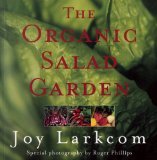

After frigid weather, most people are especially anxious for signs of spring. Crocus are considered by many to be the first spring flowers, but many minor bulbs bloom even earlier. These plants are usually short and small, but if planted in mass, they can be most effective in the landscape. Here are a few harbingers of spring to look for in gardens this spring or consider planting in your yard this fall:
Glory-of-the-snow (Chionodoxa luciliae) Flowers are vivid blue with white centers. Plants grow 3 to 6 inches tall, making this plant useful in rock gardens, for naturalizing, and in the foreground of borders and walkways. White and pink cultivars are also available.
Winter aconite (Eranthis hyemalis) Flowers are yellow, 3 inches in height, and resemble buttercups. These bulbs may bloom as early as January. Because the flowers are low to the ground, they are best used in a mass or for naturalizing near walkways.
Common snowdrop (Galanthus nivalis) Plants may bloom in January. Flowers stems are about 6 inches tall and bear solitary, drooping, white blooms with green spots on the inner segments. These bulbs look best when planted in clumps or naturalized along heavily trafficked areas.
Netted iris (Iris reticulata) Lightly-scented flowers are usually violet-purple, although white and light-blue cultivars are available. Plants grow from 3 to 9 inches tall and are excellent for rock gardens and sunny borders. One of the earliest irises, they usually bloom in early March.
Spring snowflake (Leucojum vernum) Drooping, bell-shaped flowers range from 6 to 12 inches in height. They are white, except for small, green spots on the petal ends. They are best planted in clumps in naturalized areas. Look for blooms as early as February. Do not confuse spring snowflake with summer snowflake (L. aestivum) or autumn snowflake (L. autumnale) that appear in different seasons.
Minor bulbs are often overlooked in favor of the showier large bulbs (daffodils, tulips, hyacinths, etc.) that bloom later. But the minor bulbs have a useful place in home landscapes by extending the season of bloom and giving the gardener a "jump on spring." Like other spring-flowering bulbs, they are best purchased and planted in the fall.

Join "Garden Notes" and plan for Harvest Success as you track and record your gardening progress. Your Free Personal Garden Journal has pages for jotting down notes on the seeds you start, your new plantings, when you fertilized, and even a graph to plot a new garden.
I didn't want to see another internet "eBook" on growing anything, but my husband signed up for Kacper's free report and I have to tell you, it is WELL worth the read. If you think you know everything about growing tomatoes, I challenge you to read Kacper's report. HIGHLY recommended!

Based entirely on organic gardening principles. This says it all. Joy's book has been fully revised and updated and includes extensive new reading, particularly on oriental and fruiting vegetables, and did I mention, is now entirely based on organic gardening practices. Read More...
